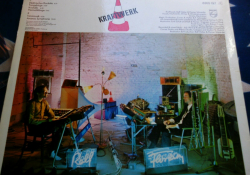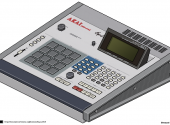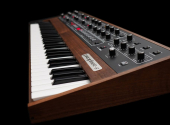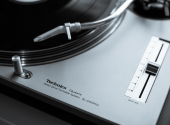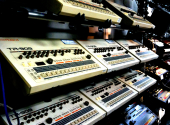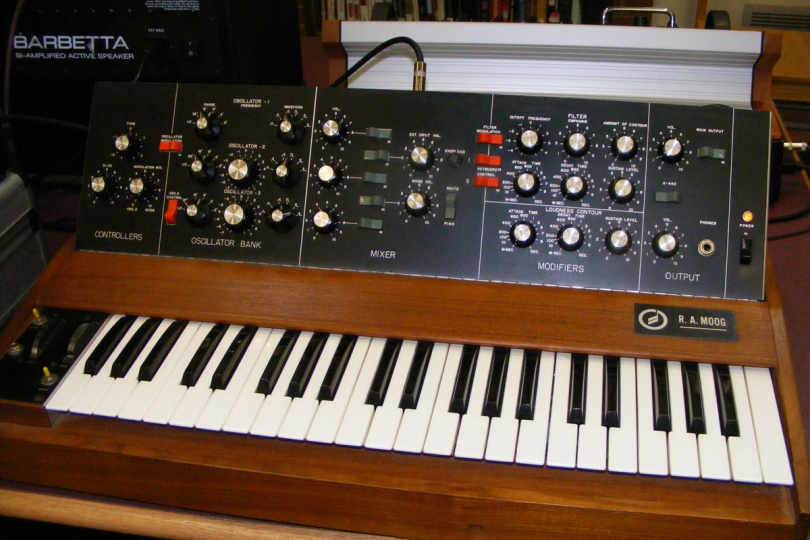
The Gear That Made Us #7: The Moog Minimoog
Created by engineer Bill Hemsath and Robert Moog in the early '70s, over time the Minimoog has managed to capture the imaginations of countless musicians globally. Join me in this article for a closer look at why it was such a unique analogue synthesiser in this next installment of: The Gear That Made Us.
An unlikely package
It is interesting to note that the pioneering Robert Moog (the man behind Moog Music Inc.) initially saw early prototypes of the Minimoog as something that wouldn’t be worth pursuing. Prior to later versions, it was Moog engineer Bill Hemsath who had originally sawed a keyboard in half and wired several components into a small cabinet to create the first prototype. His aim was to create something that had all the chutzpah of the larger Moog Modular synths but could be carried as a portable solution for live performance. This was the first time in history that a keyboard had been bolted to a synthesizer and it still had everything you needed to sculpt and shape sounds effectively.
Appearance-wise you could say the Minimoog looked somewhat unassuming. With 44 keys resulting in about 3 and a half octaves, it was all housed in a simple wooden case cut from walnut boards and allowed the user to modify parameters from the top panel facing them above. Another interesting aspect is the fact that it became known for its unique sonic characteristics predominantly because of a minor miscalculation from the product designers. In this case, it was a filter overdriven by 10-15 dBs more than necessary. Even when the mistake was discovered, it was agreed that it shouldn’t be rectified.
A question of frequencies
While the Moog Minimoog was compact, a lot of thought still went into the resulting sound quality of the instrument. One example of this is that discrete transistors were opted for instead of integrated circuits, which didn’t allow for good audio signals back in the 70s. Inside were three oscillators which fed through a low-pass filter and then to a VCA or Voltage Controlled Amplifier (two separate envelope controls could be used for both the filter and the VCA). In terms of the Model D, it added to the technology already used in the A, B and C versions but largely remained the same.
One of the first players who is said to have brought the Minimoog to stage actually had an important part to play in changing Bob Moog’s perception about the possible market demands for the instrument. Heard in the video above (perhaps one of the first recordings made using a Minimoog no less), Sun Ra (born Herman Poole Blount), was a pioneering American avant-garde jazz composer, poet, and synthesizer player who became known for his experimental approach to music. In the fall of 1969, Blount had visited Bob Moog’s plant and was loaned a Model D prototype a few months before the Model D was launched in March the following year. It was only because of the feedback from Sun Ra that Bob decided to proceed with production of the Minimoog, helping to cement its place in analogue history.
A broad appeal
After Sun Ra had pioneered the use of the Minimoog in a live setting, many more jazz artists began to follow suit. While it was one of the last major genres of music to embrace the synthesizer, it is safe to say that creativity was by no means in short supply. Artists such as Chick Korea and Herbie Hancock are just two examples of jazz & funk greats who enjoyed using the Moog Minimoog when performing. In fact, in regards to Hancock, he would even utilize a custom system that allowed him to control two Minimoogs and an Arp 2600 at once.
It is key to note nonetheless that a lot of the success of the Minimoog was also down to its appeal across multiple genres. Away from the jazz world, purist electronic music pioneers Kraftwerk would utilize it for their ‘proto-techno’ and early electro, helping to bring the Minimoog sound to new audiences and inspiring many more in its wake. New wave pioneer Gary Numan’s first band Tubeway Army were also fans of the device after Numan had originally discovered an unused one in the corner of a studio’s control room, waiting to be collected by a hire company. More artists who found success with the Minimoog include Bob Marley, Toto, Rush, Nine Inch Nails, Rick Wakeman (Yes), Dr. Dre, and Pink Floyd.
When mono is enough
What they don’t provide for in depth, they provide for in efficiency of design. And the Moog Minimoog is perhaps the greatest example of that in practice when it comes to analogue synthesizers. As heard in Michael Jackson’s “Thriller”, monophonic synths such as the Minimoog often do a much better job when it comes to crafting basslines. For many, it has been the iconic go-to monosynth for quite some time though it is important to remember it has the ability to do a great job on numerous sounds. From blistering leads and ‘blippy’ ones with good bottom end to simulations of acoustic instruments like woodwinds, brass, and strings. With a Minimoog you have simplicity and portability but also have a lot of choice.
So what do you think of the Moog Minimoog—does it deserve to be noted as one of the best monophonic synthesizers of all time? Let us know in the comments below.
If you have found an error or typo in the article, please let us know by e-mail info@insounder.org.

